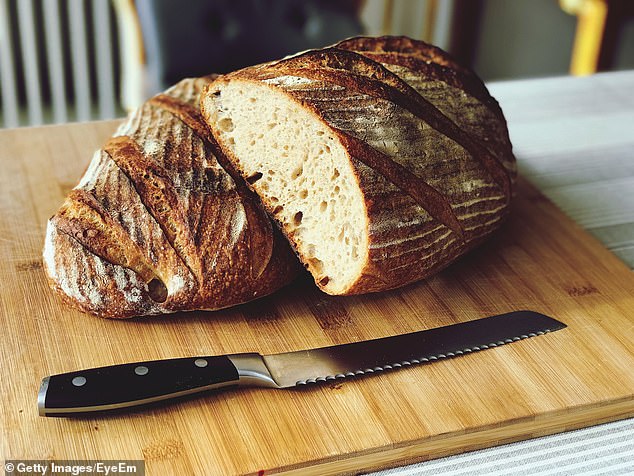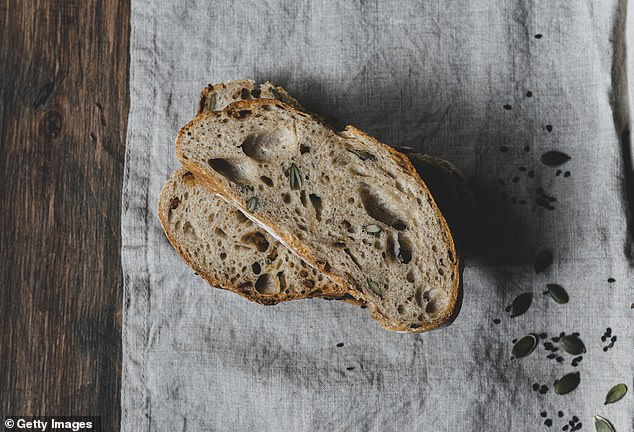Dietitians Susie Burrell and Leanne Ward reveal why sourdough bread isn’t as healthy as you think
>
Dietitians have revealed why sourdough bread isn’t the health hero it’s often made out to be, and the quick and easy two-step process to help you identify if yours is the real deal.
Susie Burrell from Sydney and Leanne Ward from Brisbane are the brains behind the hugely popular The Nutrition Couch podcast, which aims to dispel myths about diet and healthy eating and explain how you can get the best results.
The couple said that while sourdough is often marketed as the “healthiest” bread option you can make, in reality many “sourdough breads” are nothing of the sort and often come in jumbo slices that are larger than any regular slice of bread. bread.
Dietitians have revealed why sourdough isn’t the health hero it’s supposed to be, and the two-step process to help identify if yours is good for you (Susie Burrell and Leanne Ward pictured)
“The fact that sourdough has some health benefits, as we know it controls blood glucose levels better than regular bread, has good levels of fiber, and is good for gut health, doesn’t change the fact that that you still have a very high carbohydrate load.” ‘ Susie said on the podcast.
“It’s also often cut into these huge slices that have the carbohydrate equivalent of two slices of regular bread — almost 40 to 50 grams per slice.”
Susie added: ‘I would go as far as to say that white sourdough isn’t even that healthy.
“Sure, it’s better than regular white bread or Turkish bread, but it’s not as good as a grain or rye option.”

The couple said white sourdough isn’t usually as healthy, especially in large slices, and it’s much better to go for a grain or rye option (file image)
Leanne agreed with Susie’s points, saying that a lot of the benefits of sourdough are “outgrown” if you constantly “have tons of it.”
“Sourdough is my first choice for breads, but quality really matters,” he said.
“It’s very variable depending on where you buy it from.”
There are some quick and easy ways to tell if the sourdough you’ve bought is authentic or not.
The first is to eye scan the ingredients if they are in a package and not bought fresh from a bakery.
“Traditional sourdough must be made and fermented for many hours, and ideally only have three ingredients: flour, water, and salt,” Leanne said.
“As for supermarkets, some of them have sourdough breads and if you take a look at them, they have a ton of ingredients like ascorbic acid, yogurt and vinegar.
“These are all signs that the sourdough is not authentic and they are just trying to imitate it.”

An easy way to identify good-quality sourdough is to look for minimal ingredients and tiny air bubbles in the bread (stock image), which indicate the fermentation process.
He added that a “good quality sourdough” has minimal ingredients and certainly no “sourdough flour.”
It is then fermented for anywhere from eight to 24 hours, so it can be expensive, often running $8, $10, or even $12 a loaf.
“The second way you can tell if your sourdough is authentic is by cutting it up,” he said.
‘When you cut a good one, it will have these big air pockets in the bread. These are a good sign as they show a good fermentation process.
“If you’re cutting and there are no bubbles, then it’s probably not OK.”
Both dietitians agreed that “good” sourdoughs have a “distinctive” almost sour taste and will be chewy, rather than mushy.
They will also harden quickly over a period of even a single day, because they don’t have ‘all the preservatives that regular bread has’.
“If you want an indicator of how good the sourdough you’re eating is, ask the bakery how long it ferments,” Susie said.
The longer, the better for the intestine.
For more information on The Nutrition Couch, you can visit the website here.
